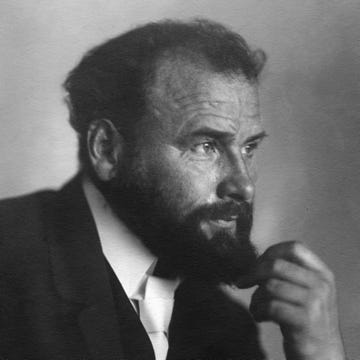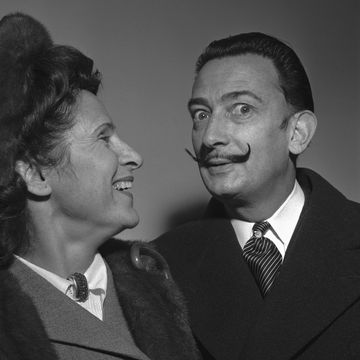(1606-1669)
Who Was Rembrandt?
Rembrandt was a 17th-century painter and etcher whose work came to dominate what has since been named the Dutch Golden Age. One of the most revered artists of all time, Rembrandt's greatest creative triumphs are seen in his portraits of his contemporaries, illustrations of biblical scenes and self-portraits as well as his innovative etchings and use of shadow and light.
Early Life
Born in Leiden, Netherlands, in 1606, Rembrandt Harmenszoon van Rijn attended elementary school from 1612 to 1616, and then attended the Latin School in Leiden, where he partook in biblical studies and lessons on the classics. It is unclear whether Rembrandt completed his studies at the Latin School, but one account claims that he was removed from school early and sent to be trained as a painter at his own request.
From 1620 to either 1624 or 1625, Rembrandt trained as an artist under two masters. His first was painter Jacob van Swanenburgh (1571–1638), with whom he studied for about three years. Under van Swanenburgh, Rembrandt would have learned basic artistic skills. Van Swanenburgh specialized in scenes of hell and the underworld, and his ability to paint fire and the way its light reflects on surrounding objects was likely an influence on Rembrandt’s later work. Rembrandt's second teacher was Amsterdam’s Pieter Lastman (1583–1633), who was a well-known history painter and likely helped Rembrandt master the genre, which included placing figures from biblical, historical and allegorical scenes in complex settings.
The Leiden Period (1625–1631)
In 1625, Rembrandt settled back in Leiden, now a master in his own right, and over the next six years, he laid the foundations for his life's work. It was during this time that Lastman's influence was most noticeable, as in several instances Rembrandt deconstructed his former master's compositions and reassembled them into his own, a practice carried on by Rembrandt's own pupils later on. Rembrandt’s paintings created at this time were generally small but rich in detail; religious and allegorical themes were prominent. Rembrandt also worked on his first etchings (1626) in Leiden, and his eventual international fame would rely on the widespread dissemination of these works. Diverging from his contemporaries, Rembrandt endowed his etchings with a painterly quality achieved through suggestive handling of light and dark.
Rembrandt's style soon took an innovative turn involving his use of light. His new style left large areas of his paintings obscured in shadow; through his interpretation, illumination grew rapidly weaker as it extended into the painting, creating spots of brightness and pockets of deep darkness. In this vein, in 1629, Rembrandt completed Judas Repentant and Returning the Pieces of Silver, among others, works that further evidence his interest in the handling of light. Another example is his Peter and Paul Disputing (1628), in which the painting’s lighted elements are clustered together and surrounded by clusters of darker tones, drawing the viewer's eye to a general focal point before moving in to observe the details within.
Starting in 1628, Rembrandt took on students, and over the years his fame attracted many young artists seeking to learn at his side. Only an estimate of the number of his pupils can be made since official registers of trainees have been lost, but it is believed that over the course of his career he had fifty or so students.
The First Amsterdam Period (1631–1636)
Rembrandt began to do business in 1631 with Hendrick Uylenburgh, an Amsterdam entrepreneur who had a workshop that created portraits and restored paintings, among other activities. Rembrandt either commuted from Leiden to Amsterdam or moved to Amsterdam at this stage. He began to paint dramatic, large-scale biblical and mythological scenes using his high-contrast method of light and dark, such as The Blinding of Samson (1636) and Danaë (1636). Despite his predilection for biblical imagery, it is unknown if Rembrandt belonged to any religious community.
In Amsterdam, he also painted numerous commissioned portraits with the help of various assistants in Uylenburgh’s shop. Rembrandt produced much more energetic works than those created by the portrait artists so prevalent in Amsterdam at the time, and he received numerous commissions despite his questionable ability to capture the likeness of his subject. To this point, Constantijn Huygens, a Dutch diplomat, mocked a portrait Rembrandt had done of one of his friends for its lack of verisimilitude, and Rembrandt's self-portraitures contained noticeable physiognomic differences from one image to the next.
The Third Amsterdam Period (1643–1658)
In the 10 years following the unveiling of The Night Watch, Rembrandt's overall artistic output diminished drastically and he produced no painted portraits; either he received no portrait commissions or he stopped accepting such commissions. Speculation about what happened after The Night Watch has contributed to the "Rembrandt myth," according to which the artist became largely misunderstood and was ignored. Often blamed for Rembrandt's supposed downfall are the death of his wife and the supposed rejection of The Night Watch by those who commissioned it. But modern research has found no evidence that the painting was rejected or that Rembrandt experienced deep devastation upon his wife's death. There is also no evidence that he was ever "ignored," although he was often the target of his contemporary critics' barbs.
It has been put forth that Rembrandt's crisis may have been an artistic one, that he had seen his methods stretched to their practical limits. And the variations in his few paintings from 1642 to 1652—the period that marks the beginning of what is usually referred to as Rembrandt's "late style" — might be seen as a sign that he was searching for a new way forward.
QUICK FACTS
- Name: Rembrandt Harmenszoon van Rijn
- Birth Year: 1606
- Birth date: July 15, 1606
- Birth City: Leiden
- Birth Country: Netherlands
- Gender: Male
- Best Known For: Known for his self-portraits and biblical scenes, Dutch artist Rembrandt is considered to be one of the greatest painters in European history.
- Industries
- Art
- Astrological Sign: Cancer
- Schools
- University of Leiden
- Nacionalities
- Dutch
- Death Year: 1669
- Death date: October 4, 1669
- Death City: Amsterdam
- Death Country: Netherlands
Fact Check
We strive for accuracy and fairness.If you see something that doesn't look right,contact us!
CITATION INFORMATION
- Article Title: Rembrandt Biography
- Author: Biography.com Editors
- Website Name: The Biography.com website
- Url: https://www.biography.com/artists/rembrandt
- Access Date:
- Publisher: A&E; Television Networks
- Last Updated: April 1, 2021
- Original Published Date: April 2, 2014












